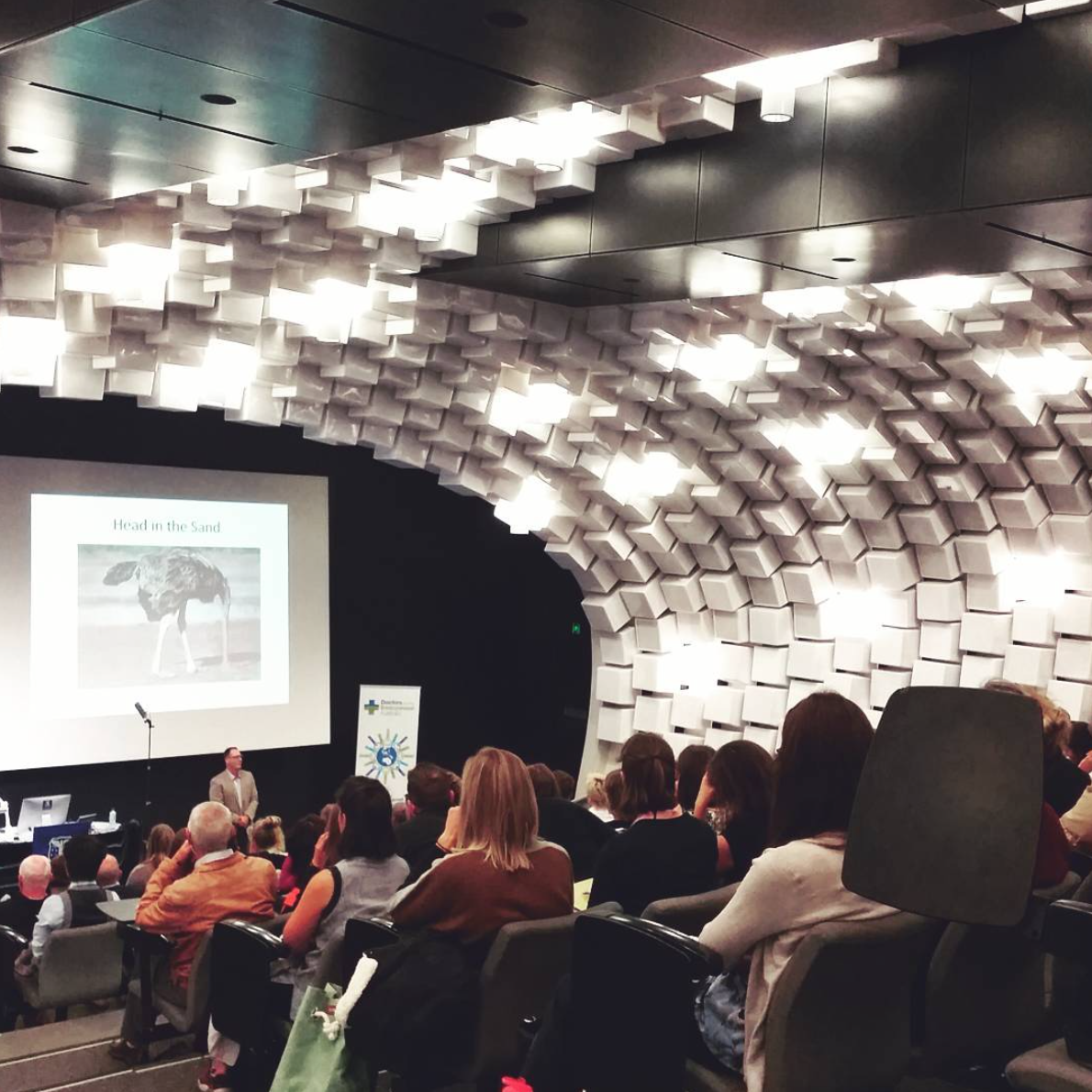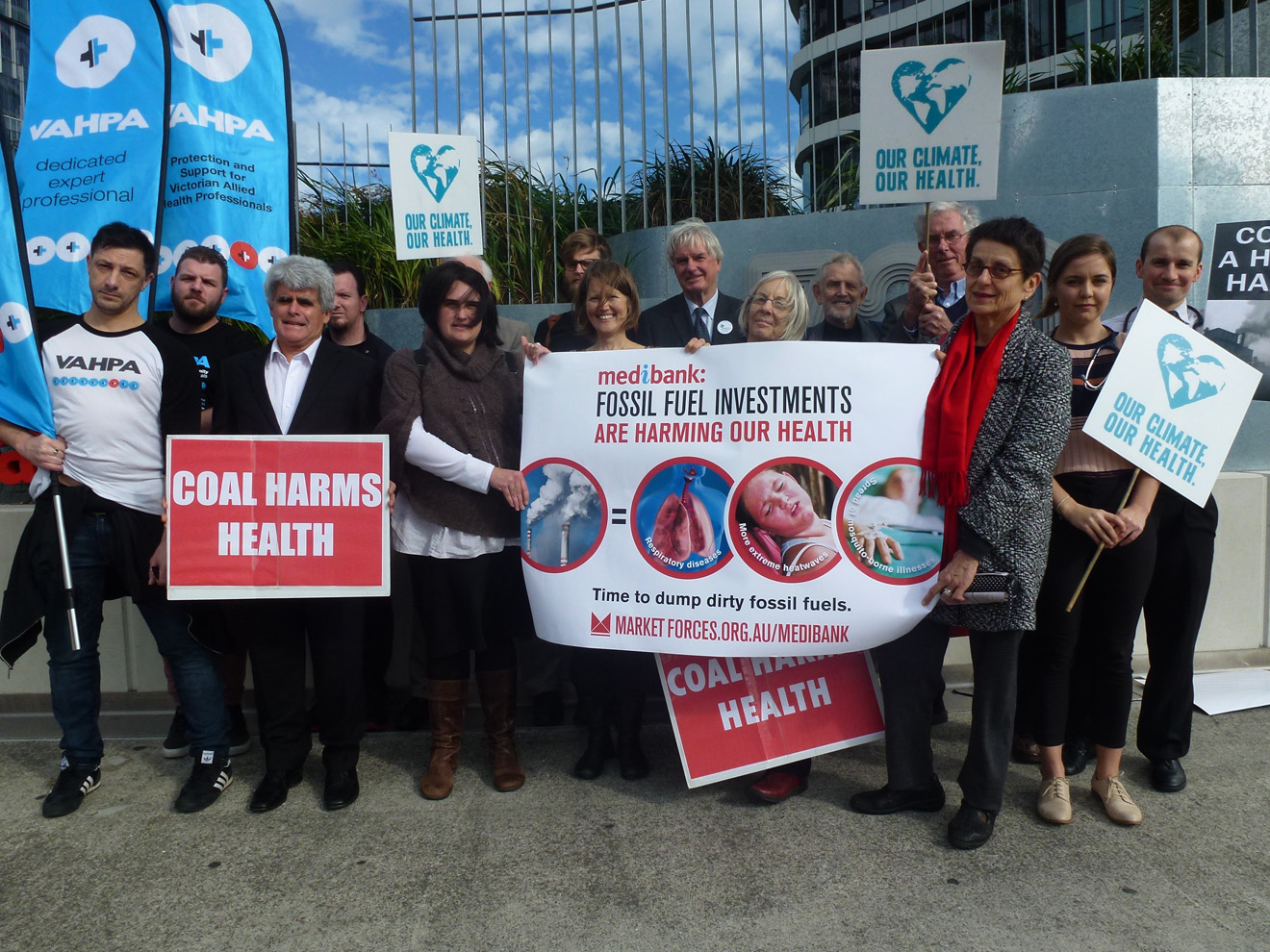As the heaviest health burden of global warming falls on the most vulnerable, doctors will be on the front lines
It was about 4pm when the weather changed. Thunderclouds rolled into Melbourne and strong northerly winds shook the rye grass pastures ringing the city, sweeping pollen into the air.
On the evening of 21 November 2016, people who had never previously experienced asthma symptoms developed severe respiratory distress.
Ambulance calls increased by 20-fold. There were 8,500 asthma presentations over the next 13 hours. In terms of health impact, this was the worst thunderstorm asthma incident to be recorded internationally.
“No one saw this coming,” Dr Stephen Parnis, a consultant emergency physician, told the Doctors for the Environment conference in Melbourne last month. While the emergency response was admirable, Victoria was underprepared for an asthma outbreak on this scale.
Pollen levels were not being monitored closely and there was a 13-hour delay in the state emergency response mechanisms, Dr Parnis said.
“I don’t have the evidence to say that this is directly related to climate change,” he said.
“[But] climate-related disasters are increasing in frequency and impact. There is no doubt about that. We can’t prevent climate change. It’s here.”
While a single weather event cannot be attributed to anthropogenic global warming, the increase in weather extremes has been linked to higher carbon dioxide levels in the atmosphere.
“It’s obviously an extremely large change to be having [weather] events that probably came along once every 30 years happening every summer, or more than once a summer,” Dr Karl Braganza, the Bureau of Meteorology’s manager of climate monitoring, said.
The current spike in atmospheric carbon dioxide concentrations – which hit 410 parts per million in April – is the largest rate of change in around 50 million years.
“These events are generally associated with planetary outgassing events or asteroid strikes,” Dr Braganza said. “So what we are really doing, as humans, is mechanically replicating that process.”
Analysis shows that human activity has increased the risk of experiencing extreme heat in Australia by up to three-fold. And around 50% of the record heat anomaly of October 2015 could be attributed to increasing carbon dioxide levels, one study estimated.
“Heatwaves are the most lethal of the natural disasters,” Dr Parnis said. “They are also the most insidious. They don’t have the drama factor that [other natural disasters] have, but they kill far and away more people and cause major morbidity.”
During Melbourne’s 2009 heatwaves, ambulance callouts increased 46% and 374 heat-related deaths were recorded. Subsequent bushfires on Black Saturday killed 173 people and destroyed 2,133 houses.
Climate change is believed to have contributed significantly to recent droughts, coastal flooding, extreme rainfall, bushfires and heatwaves around the globe.
And with warmer, wetter climates the incidence of mosquito-borne diseases such as dengue fever, as well as water and food-borne diseases, is expected to rise.
“Ross River fever is now able to be contracted in suburban Melbourne,” Dr Parnis said. “Not that long ago it was confined to northern Victoria. There is no doubt in my mind that increased humidity and the change in the climate is contributing to that.”
In the light of this evidence, many doctors, among others, argue the threat climate change poses to public health can no longer be ignored. But can doctor advocacy really make a difference?

YES, WE CAN
Despite climate change being a grave environmental and humanitarian issue, it is often seemingly shuffled to the back of the political agenda.
Either the science is too complex, or the threats too remote, to provoke urgent action.
This is where doctors can really help, says Dr Maria Neira, director of the Department of Public Health, Environmental and Social Determinants of Health at WHO.
Having doctors drawing attention to the health impacts of climate change could be very powerful because, by doing so, a complicated piece of science could be reduced to an immediately relatable and visceral problem that people actually cared about, she told the conference.
“In my opinion, if we have been able to change a little bit the attention [directed towards climate change] it is because we started to talk about air pollution,” she said.
WHO estimates that air pollution kills around 6.5 million people each year from ischaemic heart disease, stroke, chronic obstructive pulmonary disease, acute respiratory infection and lung cancer. Australians fare better than those living in the smog-clogged cities of China and India, but long-term exposure to air pollution still accounts for 1.5% of all deaths in Australia.
WHO argues that reducing the particulate matter from power plants and vehicle emissions can significantly cut premature air pollution-related deaths, while also reducing warming.
“The day we made that link, people started to click,” Dr Neira said.
“It was magic. Because people see it. Ask the people living in Beijing. They understand very well the connection between air pollution and their health. Maybe they don’t have a scientific explanation, but they feel it. They know it’s not good for their lungs.”
Doctors can act as a conduit for these ideas, Helen Szoke, the CEO of Oxfam Australia, says.
“The general community see the medical profession as evidence-based. And the evidence is pretty compelling in terms of climate change being one of the biggest barriers to people actually realising a truly healthy life,” she said.
“That should be what is driving the medical profession to take some activism here.”
Assisting humanity was part of the mission that people signed up for when they chose to become a doctor, Szoke said.
Dr Neira argues that doctors “have the right to be influential”.
“[The health sector] needs to be able to influence urban planners, energy sectors, transport sectors – whoever will have a decision that will impact the health of our people. There are no limits on public health,” Dr Neira said.

NUTS AND BOLTS
If doctors are to weigh in on the climate change debate effectively, they must leverage their unique relationship with government in a smart and organised way. But are conservative elements within doctors’ associations holding this back?
A general consensus from the medical associations panel at the conference thought yes.
“There’s this idea that colleges are there to do the same thing they’ve done for the last 25 years,” Dr Simon Judkins, the president-elect of Australasian College for Emergency Medicine (ACEM), said.
“We need to look at how we can reinvent the role of colleges.”
Conservative ideas had prevented medical associations from banding together to form a united front on climate change, Dr Judkins said.
“We haven’t been as prepared to – for want of a better term – piss people off and make this (climate change) a number one priority.”
Although the AMA, ACEM and RACP each have position statements on climate change, there is resistance to environmental activism within
each organisation.
For example, AMA President Dr Michael Gannon recently appeared to contradict that association’s own climate-change policy. Speaking with The Guardian media group, Dr Gannon said he was not convinced that closing the Hazelwood power plant in Victoria’s Latrobe Valley in March was the right call, arguing the health impacts of unemployment in the community also needed to be considered.
The brown coal used for power production at Hazelwood has been linked to a significant burden of cardiovascular, respiratory and neurological diseases, as well as lung cancers, according to the Climate and Health Alliance.
And AMA policy states that active transition from fossil fuels to renewable energy sources should be considered to mitigate the negative effects of air pollution on health. Dr Parnis, who led the review of the AMA policy on climate change in 2015, said he was “quite taken aback” by the remarks, saying they were a “wilful distortion of the AMA policy”.
“There is no doubt that the health impact on the people in the Latrobe Valley has been a difficult one over decades. When you are the loudest medical voice in the country, you have an obligation to respect the evidence,” Dr Parnis said.
The RACGP, on the other hand, does not have an official policy position on climate change and that situation is unlikely to change, according to President Dr Bastian Seidel.
“I wish I could give you a good news story but I can’t,” he said. “Climate change is not a top priority within the RACGP, which is a shame. We are just fighting for survival to get funding.”
Ideally, the Council of Presidents of Medical Colleges would place climate change on the agenda in meetings with the Minister of Health, Dr Seidel said.
“The general community see the medical profession as evidence-based. And the evidence is pretty compelling in terms of climate change being one of the biggest barriers to people actually realising a truly healthy life.”
The message doctors conveyed to politicians must be carefully crafted, Alessandro Demaio, a medical officer at WHO, told the conference.
“People don’t want to hear about the problems, they want to hear about the solutions,” he said.
Lobbying efforts from doctors needed to match those coming from big business, he said.
“Another strategy to broaden support base for climate action is to show how climate-change solutions might tackle lifestyle diseases, including obesity and diabetes,” Demaio said.
“A low-carbon city is a low-cardiovascular disease city, it’s a low-obesity city,” he said. “A low-carbon food system is a low-obesity food system.”
Climate change and health issues often overlapped, with the greatest burden falling on the world’s poorest, Demaio said.
“If you put a heat map of the fastest-rising rates of child obesity and climate change on top of each other, they align in the world’s most vulnerable populations – lower, middle-income countries that have literally just pulled themselves out of poverty.
“And we risk doing a huge amount of human damage if we don’t get both of these issues right very soon. Why not work together?”
REAL CHANGE
Money often speaks louder than words, and health industry divestment in fossil fuel would send a clear message about climate change, Pablo Brait, a campaigner at carbon divestment group Market Forces, told the conference.
And while there was force in numbers, doctors should not underestimate the difference one person could make, he said.
Health insurer HCF’s decision to become the first Australian insurer to divest its fossil fuel investments was largely due to a single member inquiring about the company’s strategy. A letter sent by HCF to this member was then circulated by Market Forces, putting pressure on the company to act.
In announcing the decision, HCF said it would not keep funding activities that could threaten the health of its 1.5 million members. Fossil fuel investments comprised around 1% of its $1.39 billion investment business.
Market Forces is now turning its attention to Medibank, Australia’s largest health insurer, as well as BUPA and NIB.
On 22 May, Market Forces presented the case for divestment to Medibank at a meeting with the company’s Chief Medical Officer, along with a delegation from Doctors for the Environment Australia, Australian Medical Students Association, Victorian Allied Health Professionals Association, and Healthy Futures.
“Our main argument is that it makes no sense for a company whose interest is in keeping the population healthy, to be invested in the industries driving the ‘biggest global health threat of the 21st century’, according to The Lancet,” Mr Brait told TMR.
According to the Australian Prudential Regulation Authority, Medibank have around $443 million in equity investments, of which some unknown proportion will be in fossil fuels, he said.

In a campaign launched in April, Doctors for the Environment urged Australia’s 600,000 health workers to divest any investments they had that were related to fossil fuels.
While the RACP has sold out of all its fossil fuel investments, lobbying efforts by Doctors for the Environment for the AMA to similarly divest have met resistance.
But Doctors for the Environment is planning to organise more face-to-face meetings, open letters and campaigns to put pressure on health organisations over their investment strategies.
Tim Buckley, director of the Institute for Energy Economics and Financial Analysis, said public statements about divestment coming from multiple organisations at the same time could have a powerful influence on the market.
If the balance is tipped far enough, divestment could even create a “stampede effect” where a critical number of investors exit, causing fossil fuels to become a stranded asset.
And while politicians in Australia were fixated on future which still focused on coal, the biggest electricity markets in the world were swiftly moving towards renewable energy sources.
China was diversifying its electricity grid and was now three years beyond its peak use of coal, despite earlier projections that coal use would continue to rise there until 2030, Buckley said.
“India is equally impressive,” he said. India, the third-largest energy consumer in the world, had earmarked billions for solar energy projects with the Indian government forecasting that non-fossil fuel sources would supply 57% of that nation’s electricity by 2027.
“[The transformation] is happening so fast that our Australian government is going to look like idiots,” Buckley said.
“They are trying to make us a coal exporter. It is a flawed strategy. It fails rule number one of economics, which is that the customer is right. If India and China don’t want our coal, we won’t be exporting it.”
“Economics and finance will drive an inevitable technology transformation of our energy markets,” Buckley said.
“Will it happen fast enough? That’s a separate question.”


